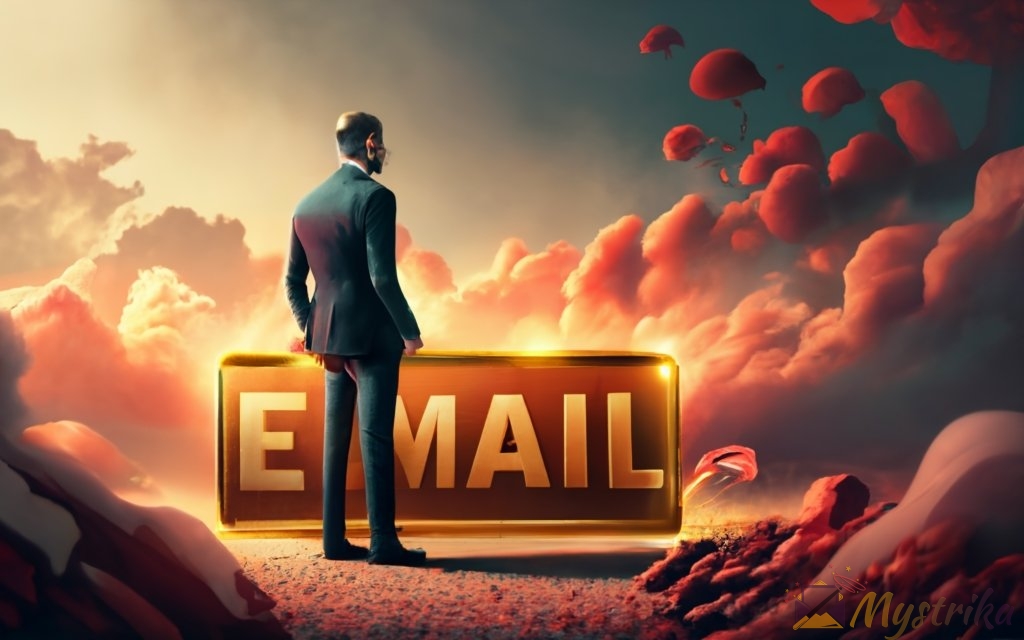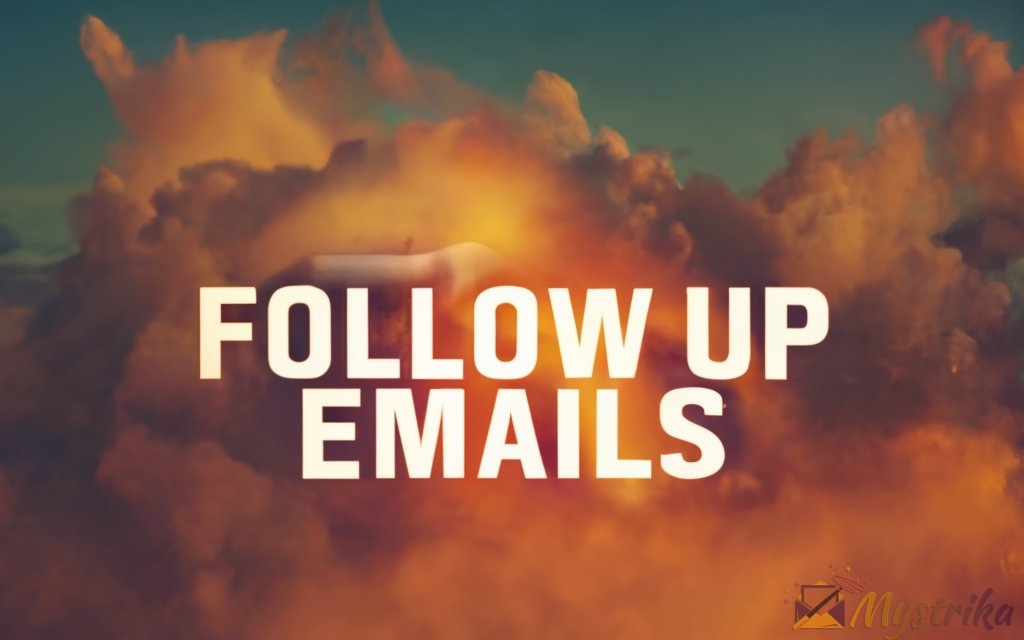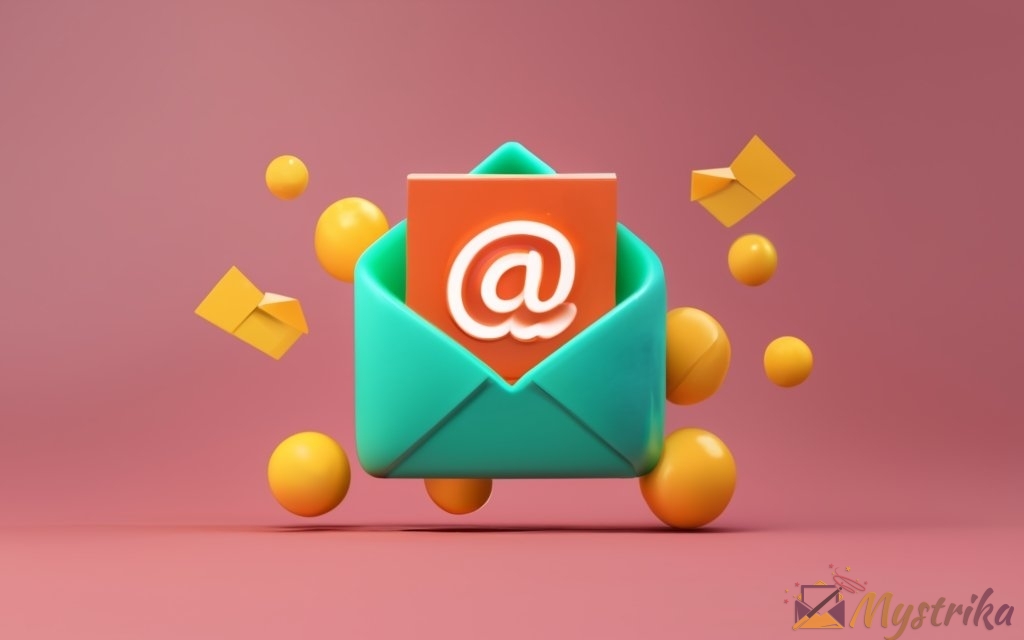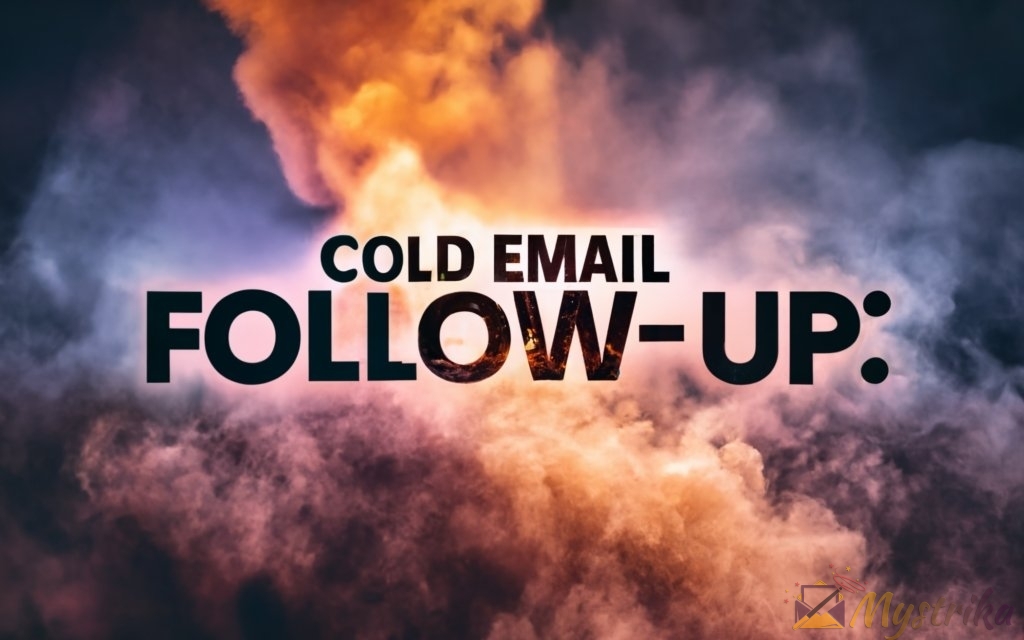Forget the stale “just following up” emails. Craft compelling follow-up messages that convert cold prospects into warm leads. Find out how many to send, when, and optimization strategies.
Grab their attention and get results with this in-depth follow-up blueprint.
Why Follow-Up Emails Are Critical for Cold Outreach Success
When it comes to cold outreach, most businesses make the mistake of putting all their eggs in one basket – the initial email. They craft what they think is the perfect cold message, hit send, and wait expectantly for the influx of responses.
But unfortunately, the reality looks much different.
Shockingly Low Response Rates to Initial Cold Emails
Multiple studies have found abysmally low response rates to first contact cold emails:
- Data from Outreach shows that most prospecting emails go unanswered, with only 2% earning a reply.
- According to a LinkedIn statistics, the average cold email only has a 2.9% response rate.
- A study by Mailshake analyzing over 4,800 cold emails found that the average open rate was 17.3%, and the average response rate was a measly 5.7% .
- Yesware data indicates that a staggering 93% of cold email chains end after the first email .
As you can see, sending a single email and waiting for the responses to pour in simply doesn’t work. Most cold emails end up in the prospect’s trash folder – or worse, marked as spam.
First contact cold emails fail for several understandable reasons:
- Inboxes are overwhelmed. The average business employee receives 121 emails per day. Yours simply gets lost in the noise.
- Timing is wrong. You hit send right as they left for a meeting or got pulled into an urgent project.
- Subject line doesn’t compel action. Out of 121 emails, they ignore the nondescript subject line.
- Momentary distraction. They open your email, but get interrupted before replying. And then forget.
For all these reasons and more, you can’t rely on one-off cold emails. But what’s the solution?
Studies Show Follow-Ups Drastically Improve Response Rates
While initial response rates are dismally low, research shows that consistent and strategic follow-up can drastically multiply your results:
- According to statistics from Woodpecker, sending just one follow-up email can increase response rates by 22% .
- A study by MailChimp found that emails sent as part of a series perform 30% better than single, non-automated emails.
- Hubspot reports that consistent nurturing and following up with leads makes them 70% more likely to convert.
- Data from Lemlist indicates that sending 4-9 follow-up emails can achieve an overall response rate above 20%, compared to just 4.5% from the initial email.
It’s clear that prospects need to be nudged and reminded in order to take action. But follow-ups don’t just improve response rates – they directly impact your bottom line.
Follow-Ups Convert More Leads into Customers
In addition to boosting responses, strategic follow-up makes prospects more likely to convert into paying customers.
- A study by Act-On software found that businesses who nurture leads with targeted campaigns achieve a 45% higher conversion rate.
- Companies who excel at lead nurturing generate 50% more sales at 33% lower cost than those with minimal nurturing.
- Remarkety reports that prospects receiving 4 or more follow-up messages convert at a rate 473% higher than those only receiving one or two messages.
- 80% of all B2B sales require at least 5 follow-up attempts after initial contact.
The difference between leaving cold outreach at the first email and pursuing an organized follow-up sequence could mean millions in lost deals. With each additional relevant touchpoint, you exponentially increase conversion rates.
So in summary, follow-up emails are essential because:
- They get far better response rates than one-off cold emails
- They remind busy prospects about your offer
- They convert more cold leads into customers
- They generate more revenue at lower costs
Following up is a fundamental pillar of any successful cold outreach strategy. Treat it as an integral part of the sales process, not an afterthought.
Now let’s look at some best practices for the number, timing, and content of effective cold email follow-up sequences.

How Many Follow-Up Emails You Should Send
You’ve crafted the perfect cold outreach email. You review your list of prospects, say a little prayer, and hit send. Now what?
In the excitement of sending that first email, it’s easy to neglect planning an entire sequence of follow-up messages. But finding that optimal number of follow-ups could determine whether your campaign sinks or swims.
Follow up too little, and you miss out on possible conversions. Follow up too much, and you’ll annoy prospects. So what’s the sweet spot?
3-4 Follow-Ups Sees Diminishing Returns
Most experts recommend sending at least 3 follow-up emails in your cold outreach sequences.
- Data from Mailshake shows that the likelihood of getting a response decreases with each email, with 87% of responses occurring in the first 4 emails.
- According to Woodpecker, prospect response rate drops to just 2.3% by the 4th follow-up email.
- Analysis by MixMax indicates that 95% of cold email replies happen within 3 follow-ups.
- Close’s sales research found that only an additional 5% of recipients reply after the 4th follow-up email.
The takeaway is that continuing your sequence beyond 3-4 follow-ups sees diminishing returns. The majority of interested recipients will respond within those first few emails.
So does this mean you should stop at 3-4 messages? Not necessarily…
Sending Too Many Follow-Ups Can Backfire
Following up relentlessly may seem like a surefire way to get prospects’ attention. But take it too far, and you’ll do more harm than good.
- Sending more than 4 follow-up emails can damage your sender reputation and risk landing in the spam folder.
- Continuing to email prospects who haven’t responded comes across as aggressive and pushy.
- Drawing out your campaign for too long might annoy prospects and hurt your brand image.
- Each additional email costs more time and resources on your end.
Bombarding recipients who never responded with 10+ emails won’t make them any more likely to reply. In fact, it may even get you labeled a spammer.
So what’s the happy medium?
Ideal Number of Follow-Ups Based on Data
After analyzing numerous studies, the data shows that the ideal number of follow-up emails falls between 4 and 7.
- According to Close, overall response rates steadily improve with each email up to 10 follow-ups. However, they plateau around the 7th email with diminishing improvements thereafter.
- Data from Lemlist indicates the highest conversion rates occur between 4 and 9 follow-up emails , achieving above 20% total response.
- Research by Propeller CRM concluded that 4-7 follow-up messages can generate up to 3X more responses than 1-3 follow-ups.
- Findings from Mailshake show that their most successful customers send an average of 5 follow-up emails.
To recap, you should:
- Send at minimum 4 follow-up emails
- Limit your outreach sequence to around 7 messages
- Avoid exceeding 9+ follow-up emails
Keep your follow-up sequences lean and focused. Every additional email costs your time without necessarily improving results. Prioritize the first 4-7 emails in your campaign and pour your energy into crafting high quality messages.
Now let’s explore when you should be sending these follow-up emails to maximize their impact.

When to Send Follow-Up Emails for Maximum Impact
You’ve meticulously crafted your cold outreach emails. You have a solid number of follow-ups planned out. But when exactly should you be hitting “send” on those messages?
Timing is everything when it comes to follow-ups. Send them too soon, and you risk being labeled a spammer. Wait too long between emails, and prospects may forget who you are.
To ensure your follow-up sequence has maximum impact, you need to nail the cadence. Here are the optimal timeframes experts recommend for each email in your cold outreach campaign:
First Follow-Up: 2-3 Days After Initial Email
Waiting at least 2 days before sending your first follow-up email gives the recipient adequate time to review, process, and respond to your initial outreach message.
- Data shows that if a prospect is going to respond to an email, there’s a 90% chance they’ll do so within 2 days.
- According to industry benchmarks, it takes approximately 48 business hours for a recipient to open, read, and respond to an email.
- Following up too soon can be perceived as aggressive and damage your sender reputation.
- Wait longer than 2 days, and your email may get buried or forgotten about.
- Two days allows the prospect time to potentially see your first email and respond while it’s still fresh in their mind.
For example, if you send your first email on a Monday morning, aim to have your first follow-up go out on Wednesday morning.
Here are a few email example scenarios:
First Email: Monday 9 AM
First Follow-Up: Wednesday 11 AM
First Email: Tuesday 2 PM
First Follow-Up: Thursday 12 PM
First Email: Friday 4 PM
First Follow-Up: Monday 9 AM
Shooting for roughly 2 business days between your first and follow-up email hits the sweet spot of staying in touch while avoiding being perceived as overly pushy or aggressive.
Second Follow-Up: 4-5 Days After First Follow-Up
Assuming you don’t hear back after your first follow-up, wait approximately 4 or 5 days before sending your second message.
- This allows enough time for your first follow-up to potentially garner a response before you loop back around.
- Following up too quickly again risks damaging your sender reputation.
- Waiting too long (1 week+) means losing momentum and allowing the prospect to forget about your previous outreach.
- 4-5 days fits nicely within 1 business week and keeps you top of mind.
For instance, if your first follow-up was sent Wednesday morning, send your second follow-up on Monday morning of the following week.
Here are some more examples:
First Follow-Up: Wednesday 11 AM
Second Follow-Up: Monday 9 AM
First Follow-Up: Thursday 12 PM
Second Follow-Up: Tuesday 10 AM
First Follow-Up: Monday 9 AM
Second Follow-Up: Friday 11 AM
The 4-5 day timeframe hits a nice cadence where recipients recognize your name and offer upon seeing your follow-up, without feeling flooded by outreach.
Third Follow-Up: 1 Week After Second Follow-Up
If you’re moving ahead to a third follow-up email, wait approximately 1 week (7 days) before sending this message.
- One week provides enough spacing from the previous email to avoid annoying recipients.
- It also allows any conversations stemming from your second follow-up to organically play out before you step in again.
- Much longer than 1 week risks the prospect forgetting who you are and losing interest.
For example, if you sent your second follow on Tuesday morning, your third follow-up would go out the next Tuesday morning.
Some more examples:
Second Follow-Up: Tuesday 10 AM
Third Follow-Up: Tuesday 10 AM (of the following week)
Second Follow-Up: Friday 11 AM
Third Follow-Up: Friday 9 AM (1 week later)
Second Follow-Up: Monday 9 AM
Third Follow-Up: Monday 11 AM (1 week later)
This roughly weekly cadence keeps you top of mind without applying too much pressure on the recipient.
Fourth Follow-Up: 1-2 Weeks After Third Follow-Up
For those persistent fourth, fifth, and sixth follow-up emails, it’s best to space them out further apart – around 1-2 weeks between each message.
- At this stage, you’ve made several attempts to contact the recipient, so avoid risking irritation with overly-frequent follow-ups.
- Allow enough time for changes with the prospect to occur, which may increase their receptiveness.
- 1-2 weeks is frequent enough to capitalize on short sales cycles, without coming across as desperate.
Here are some example fourth follow-up timeframes:
Third Follow-Up: Tuesday 10 AM
Fourth Follow-Up: Tuesday 10 AM (2 weeks later)
Third Follow-Up: Friday 9 AM
Fourth Follow-Up: Monday 11 AM (11 days later)
Third Follow-Up: Monday 11 AM
Fourth Follow-Up: Wednesday 9 AM (1 week, 2 days later)
The prospect has likely formed an impression of your professionalism and value prop by this point, so focus on consistent, non-invasive follow-ups.
Any Additional Follow-Ups: 2+ Weeks Apart
If your prospect is still not engaging after 4 follow-up emails, any additional messages should be spaced widely apart – no more frequently than every 2 weeks.
- This prevents you from wasting time and resources endlessly emailing an icy prospect.
- It avoids you being perceived as a pest by someone clearly not interested.
- The prospect’s circumstances may change given enough time, improving their receptiveness.
- But refrain from emailing them more than once a month, which comes across as desperate.
- Take their temperature with occasional check-ins 2+ weeks apart before considering moving on.
Some example late stage follow-up timelines:
Fourth Follow-Up: Wednesday 9 AM
Fifth Follow-Up: Wednesday 9 AM (3 weeks later)
Fifth Follow-Up: Friday 11 AM
Sixth Follow-Up: Friday 11 AM (4 weeks later)
Sixth Follow-Up: Monday 9 AM
Seventh Follow-Up: Monday 9 AM (3 weeks later)
These wide intervals avoid badgering recipients who remain unengaged, while keeping you on their radar in a professional manner.
Pro Tip: When managing a high volume of cold outreach, use an email automation platform to schedule and deploy your sequenced follow-up emails at the optimal timeframes.
Following this cadence allows you to maximize response rates while maintaining your credibility and professionalism. Test adjustments to the spacing and timing to determine what performs best for your specific outreach campaigns.

Personalization is Non-Negotiable for Follow-Up Emails
When it comes to cold emailing, there’s one ingredient you simply cannot neglect – personalization.
Personalized follow-up emails demonstrate that you’ve done your research on the prospect. They convey that you respect their time and aren’t just blasting out blanket sales pitches. Perhaps most importantly, they grab attention – which generic “follow-up” emails fail miserably at.
According to data from Campaign Monitor, personalized emails deliver 6x higher transaction rates and 29% higher click through rates than their generic counterparts.
Let’s look at some key ways to infuse personalization throughout your cold email follow-up sequences.
Use Prospect’s Name, Company, Role Throughout
At a minimum, make sure you have the recipient’s proper name, company, and role to include in your outreach emails.
Including the prospect’s first name in the greeting won’t go unnoticed. It’s a subtle signal that:
- You took the time to look them up individually instead of blasting out batch messages.
- You care enough to properly address them and acknowledge their humanity.
- You don’t overstep boundaries by addressing them overly casual with just their first name. Using their full name and title conveys respect.
Here are some properly personalized greetings:
- Hi John Smith,
- Hello Sarah Johnson,
- Good morning Dr. Michael Briggs,
Don’t stop at just the greeting – weave their name in throughout the email body.
You should also prominently feature the name of their company. This further reinforces that:
- You know exactly who they work for.
- You took time to research their specific company and role.
- Your offer is tailored to their company’s needs.
For example:
- As the Marketing Director at XYZ Corp, I’m sure you’re quite familiar with…
- Given Acme Co’s expansion into the healthcare space, I think you’ll find…
Finally, be sure to reflect their job title and seniority in your language:
- As a Sales Manager, you’re likely tasked with…
- As the CEO of 123 Industries, maintaining strong cash flow must be a top priority…
Get in the habit of diligently collecting and using prospect names, companies, and titles in every cold email.
Reference Past Interactions or Mutual Connections
Take personalization a step further by referencing any past interactions or mutual connections you have with the prospect.
For example, if you:
- Met them at a recent industry conference
- Previously connected on LinkedIn
- Were introduced through a mutual colleague
Make note of this to establish familiarity and rapport.
- It was great meeting you at the Digital Marketing Summit last month. Since we didn’t get a chance to connect there, I wanted to reach out…
- I see we’re both connected with John Smith on LinkedIn. He mentioned you may be interested in…
- Susan Lee suggested I connect with you about…
These personalized details help you stand out from other generic outreach they receive.
Provide Relevant Content Based on Their Interests
Beyond just their contact and company details, take the time to research the prospect’s specific interests, pain points, and goals.
Then, work these personalized insights into your follow-up emails:
- I saw on your LinkedIn profile that you’re interested in expanding internationally. Our platform has helped companies launch in over 50 countries…
- I noticed Acme Co just raised $20 million in Series B funding. Maintaining rapid growth post-funding can be challenging. We have a blueprint that helped AppXYZ scale by 300%…
- I read your recent post on optimizing supply chain operations. We’ve actually reduced costs by ~40% for manufacturers with a similar focus…
This shows you took time to understand what motivates that specific individual. It makes your follow-up feel like a personalized conversation rather than a sales pitch.
Show You Understand Their Specific Pain Points
Along those lines, integrate the prospect’s very specific pain points that your product or service can alleviate.
For example:
- You mentioned over the phone that your team spends several hours per week manually entering data. Our platform can automate 50-70% of that workload.
- I understand you’re having issues with cart abandonment on mobile devices. Our latest app update addresses this exact problem.
- I know securing Series A funding as an enterprise company poses unique challenges. We have insight on navigating those hurdles from our experiences with Company123.
Don’t make assumptions here – only reference pain points if they were directly conveyed by the prospect themselves. This makes your follow-up email feel helpful rather than salesy.
Crafting personalized follow-up emails is challenging but worth the effort. Take the time to learn about each individual recipient and reflect those details back in your messaging. Tools like contact management software and email tracking can aid in gathering these personal insights over the course of your outreach.

Crafting Follow-Up Email Subject Lines That Convert
You crafted a compelling cold outreach email. You pressed send and patiently waited for the flood of responses. Crickets.
But don’t give up just yet – more likely than not, your email was glanced over and forgotten in the sea of distractions that is our inboxes. That’s where strategic follow-up comes in.
While your follow-up messaging needs to be on point, an impactful subject line can mean the difference between ignored and opened.
Let’s explore some best practices and examples for irresistible cold email follow-up subject lines.
Guidelines for Follow-Up Subject Line Length and Content
The subject line has mere seconds to capture your prospect’s fleeting attention. With that in mind, some guidelines apply:
- Keep it short and scannable – Between 30-50 characters is ideal. Use clear, concise language.
- Personalize the subject line – Include the prospect’s name, company or role if possible.
- Communicate urgency (if relevant) – Subject lines with “urgent”, “time sensitive”, “expires soon” get higher open rates.
- Ask a question – Posing an intriguing question engages the reader.
- Emphasize exclusivity – “VIP Invite”, “Reserved for key clients”, “Private invite” type messaging compels action.
- Avoid overused phrases – “Follow-up”, “Checking in”, and “Circling back” blend into the background.
- Use brackets or dashes – These formatting techniques catch the eye.
Keep these principles in mind as you brainstorm the perfect blend of excitement, intrigue, and exclusivity.
Examples of High-Converting Follow-Up Email Subject Lines
Now let’s look at some real-world examples of stellar cold email follow-up subject lines:
- “[First Name] – Any Updates?” (Short, personalized, keeps it casual)
- “Invitation to Exclusive [Industry] Event in [City]” (Exclusive, exciting)
- “Quick Follow-Up re: [Service]” (Clear this is a follow-up, gets to the point)
- “Have You Reconsidered Our Proposal?” (Polite nudge, calls back previous discussion)
- “Last Chance for 25% Discount – Expires Tonight” (Clear urgency, exclusivity of discount)
- “[Company Name] – Seeking Your Input on [Topic]” (Personalized, makes them feel valued)
- “Did You Get My Previous Email about [Topic]?” (Gently reminds them of missed email)
- “Yes, we can help you [achieve goal]” (Starts with “Yes” to grab attention)
- “[Name], Heard You’re Having Issues with [Pain Point]” (Shows you understand their struggles)
- “Checking In – [Name], are You Available This Week?” (Extra dash grabs eye, gets right to point)
Follow these examples and guidelines to craft creative, compelling subject lines. Remember, this may be your last chance to capture their attention before they move on, so make it count!
Now that you’ve grabbed their attention with the subject line, you need an email body to back it up. Let’s explore some tips for irresistible follow-up email copy.

How to Write Persuasive Follow-Up Email Body Copy
You nailed the subject line. Now to actually craft the email content that convinces prospects to convert.
Writing compelling follow-up emails is equal parts art and science. You must pique their interest while conveying helpful information and clearly stating your request or offer.
Here are some tips for writing irresistible cold email follow-up body copy:
Remind Prospect of Initial Outreach and Offer
Briefly recap your initial email as a courtesy to remind them of who you are, refresh them on your offer, and provide context for your follow-up.
For example:
- I reached out last week regarding Acme Co’s struggles with [problem X]. Our [solution Y] has helped similar companies improve [metric] by 50%.
- Last month I contacted you about [topic/offer]. I wanted to follow up and see if you’d had a chance to consider our proposal.
- I emailed you recently about [service] and how it could benefit [result]. I’m circling back to see if you have any additional questions.
A simple reminder ensures they recall your previous message. But don’t simply copy/paste your original email.
Provide New Value and Content in Each Follow-Up
Every follow-up email should offer something fresh – new information, resources, or value.
For example:
- Since we last spoke, we released [new feature] to help customers improve [results]. Check out this video demo highlighting how it works: [link]
- I recently published a new blog post detailing our step-by-step methodology for reducing [pain point] by 50%. Give it a read here: [link]
- We just opened registration for our exclusive [event/webinar] featuring [notable speaker] on [compelling topic]. You can sign up here: [link]
This gives the recipient an incentive to open your latest email and keeps the conversation progressing forward.
Use a Conversational Yet Professional Tone
Strike a balance between a formal sales letter and a casual personal email. Be personable but not over-familiar.
- Use natural language, first names, and contractions to keep it friendly.
- Avoid overused sales speak and clichés that sound robotic.
- Don’t get too informal – maintain professionalism befitting their seniority.
- Use positive, enthusiastic language and avoid sounding pushy or aggressive.
Here are some examples of a conversational but polished tone:
- Thanks for connecting at [event], Sarah! I wanted to follow up on our discussion about [topic].
- Hi Michael, I hope you’ve been having a great start to your week! Just a quick note regarding the [idea/proposal] I recently shared…
- John, I noticed Acme Co just [news/update] – congratulations! I’d love to discuss how [our solution] can help you continue that momentum.
A warm, natural tone helps build rapport and trust over the course of your outreach. But don’t get too casual too quickly when following up with someone you don’t know well.
Keep Follow-Up Emails Concise and Scannable
Avoid huge blocks of dense text. Break up your follow-up into short paragraphs focused on one idea each to improve scannability.
- 3-5 concise paragraphs is ideal – Get your message across without overwhelming them.
- Use bullet points to highlight key details and value props.
- Bold key phrases to draw the eye to important points.
- Include relevant images, graphs, or screenshots to reinforce your message visually.
- End with a clear CTA telling them exactly what you’d like them to do.
Follow-ups need to be short and scan-friendly to hold attention in an ultra-busy inbox.
Here’s an example scannable follow-up format:
Paragraph 1: Quick personalized intro
Paragraph 2: Recap initial email
Paragraph 3: Key benefits/details
Paragraph 4: Call-to-action
Bullet Points: Additional value props/testimonials
Image: Demo screenshot
CTA: Request for call/meeting
Your follow-ups should be compelling yet concise. Use these tips and examples to craft emails that get opened, read, and drive conversions.

The Importance of an Effective Call-to-Action in Follow-Ups
You’ve composed what you feel is the perfect follow-up email. But hidden amongst eloquent words, valuable information, and persuasive messaging, does your email contain a clear call-to-action (CTA)?
Without an obvious CTA, recipients may not know the next step you want them to take. Or worse, they’ll take no action at all.
Let’s look at some tips for crafting CTAs that drive conversions from your cold email follow-ups.
Types of Calls-to-Action Appropriate for Follow-Ups
The CTA needs to match the current stage in your customer’s journey. Follow-ups sent to brand new prospects should focus on a small commitment, like requesting a meeting. Follow-ups to qualified leads can encourage bigger commitments like trials or purchases.
Here are some common CTAs appropriate for various follow-up scenarios:
- Schedule a call
- Book a consultation, demo or discovery call
- Start a free trial
- Request a custom quote
- Download an informational resource (e.g. eBook, whitepaper, checklist)
- Watch a demo video
- Visit your pricing page
- Claim a limited-time discount
- Register for a webinar
- Set up a free account
- Purchase a product
Choose the CTA that moves them one step further in your sales process, without demanding too much too soon.
Crafting Your CTA with Action-Oriented Language
Your CTA should:
- Use concise, action-oriented language: “Register Now” vs “You may want to register”
- Provide a link, phone number, or next steps to remove friction
- Offer value for taking action: “Download our free guide”
- Convey urgency if applicable: “Offer expires this Friday!”
Strong CTAs use the imperative tense to nudge your prospect into motion with a clear directive.
✅ “Schedule a free demo call here”
❌ “You may want to request a demo call if you’re interested”
Compelling CTAs speak directly to what the prospect stands to gain through clear, urgent language.
Placing Your CTA Prominently in the Email
Since your CTA is the lynchpin prompting action, make sure it is highly visible:
- Feature the CTA prominently near the beginning and end of your email.
- Use a larger font, different color, bullet points or bolding to make it stand out.
- Add buttons, text links, images etc to draw attention to it.
You want your call to action jumping off the screen. Avoid burying it in a dense paragraph or tacking it on as an afterthought.
An effective CTA is crucial for converting cold email follow-ups into calls, demos, trials, purchases and beyond. Invest

Leverage Multichannel Follow-Ups for Maximum Impact
Your cold email follow-up strategy should extend beyond just email. By leveraging multiple channels, you can drastically increase prospects’ exposure to your messaging.
This multichannel approach is known as omnichannel or converged marketing – strategically engaging prospects across multiple touchpoints to improve response rates.
Let’s explore the omnichannel follow-up process and how it amplifies results.
Combining Email with Social Media and Phone Outreach
At a minimum, your cold outreach follow-ups should utilize both email and LinkedIn to reach prospects.
You can follow up via:
- Email – Send sequenced email follow-ups as outlined earlier.
- LinkedIn – Send InMail follow-ups, request to connect, profile views.
- Phone – Follow up periodically with brief, non-invasive phone calls.
- Social media – Follow their company pages, share their content.
- Direct mail – Send relevant content pieces or customized gifts.
This omnichannel approach ensures prospects see your message across channels, not just in their crowded inbox.
According to Super Office, sales reps using social media combined with email achieve 45% more sales opportunities than email alone.
Tools to Orchestrate Multichannel Follow-Up Campaigns
Executing sequenced multichannel outreach requires automation tools. Platforms like Outreach and SalesLoft allow you to:
- Centralize your contact data and history in one place.
- Sync email and LinkedIn for seamless integration.
- Schedule multichannel follow-ups with custom time delays.
- Track cross-channel activity like email opens, LinkedIn profile views.
- Stop follow-ups automatically when prospect engages.
This enables you to coordinate omnichannel campaigns at scale while optimizing your approach based on data.
How Multichannel Follow-Ups Boost Response Rates
There are several reasons converged follow-up campaigns perform better:
- Increased exposure – Prospects see your message across multiple platforms, not just email.
- Improved deliverability – Emails likely land in the social tab instead of promotions.
- Social validation -Connecting on LinkedIn establishes trust and familiarity.
- Enhanced personalization – Researching prospects provides more details to personalize outreach.
- Persistence without irritation – Varying channels avoids overloading their inbox.
- Higher response flexibility – Gives them different ways to conveniently reply.
Make your follow-ups impossible to ignore by surrounding prospects with relevant touchpoints across channels. Just be sure not to overdo it – calibrate based on their engagement.
A strategic multichannel approach will take your cold email follow-ups to the next level.
Now let’s explore how to automate these campaigns at scale to maintain consistency and maximize your time.

Automate Your Follow-Up Email Sequences
Between researching prospects, drafting personalized messages, and tracking open/reply rates, cold email follow-ups demand a lot of manual effort.
But constantly keeping up with dozens or hundreds of outreach campaigns isn’t scalable long-term.
That’s where automation comes in. Let’s explore how you can use automation tools to streamline and optimize your follow-up process.
The Value of Automation for Cold Email Follow-Ups
Automating repetitive follow-up tasks provides several key benefits:
- Saves time – Automated sequencing eliminates manual emailing and tracking.
- Enables scale – Manage high volumes of outreach without being overwhelmed.
- Ensures consistency – Automated templates maintain consistent messaging.
- Optimizes timing – Automate ideal delays between follow-up emails.
- Provides visibility – Dashboard tracking of opens, replies, interests.
- Improves personalization – Merge custom fields for each recipient.
- Increases effectiveness – See what messages perform best and continuously improve.
Without automation, executing cold email at scale becomes exponentially more challenging.
Best Practices for Setting Up Your Follow-Up Sequences
When setting up your automated follow-up sequence, keep these tips in mind:
- Use a template – Create templates for initial email and multiple follow ups.
- Personalize – Use merge tags to customize names, companies, details for each prospect.
- Schedule delays – Set ideal timespans between each follow-up email.
- Enable stopping rules – Prevent further emails if prospect responds or opts out.
- Track analytics – Review open/reply rates to refine your messaging and cadence.
- Integrate with your CRM – Sync email history and activity timeline.
Following these best practices will ensure you efficiently nurture leads over time while optimizing results.
Recommended Tools for Automating Follow-Up Emails
There are many excellent automation platforms to explore, including:
- Mystrika – #1 Cold Email platform with FREE Warm up.
- Woodpecker – Intuitive cold email automation with free plan.
- Mailshake – Easy-to-use sequencer with excellent deliverability.
- Lemlist – Automate multichannel drip campaigns with strong analytics.
- Outreach – Robust solution great for sales teams (pricier option).
- Salesloft – Lead engagement platform with LinkedIn integration.
- PersistIQ – AI-powered engagement automation.
- Mixmax – Gmail add-on to schedule and track cold emails.
Evaluate your needs, budget, and tech stack before choosing the right automation tool for your cold outreach initiatives.
In short, converting cold prospects requires diligent, sustained follow-up. Automation makes that process scalable, allowing you to turn previously unresponsive leads into sales.
Next let’s touch on when to continue following up – and when it’s best to move on.

Continued Follow-Ups Drive More Meetings and Revenue
You’ve sent your initial email. You’ve sent a series of thoughtful follow-ups. But you’re still stuck at zero replies.
At what point should you cut your losses and move on? Or should you keep the follow-up campaign going indefinitely?
The answer lies in balancing persistence with practicality. Let’s explore some best practices.
Persistence Pays Off in Cold Email Outreach
Numerous studies prove that persistence and sustained follow-up generate significantly more meetings and revenue.
- 80% of sales require at least 5 follow-up attempts after initial contact [1].
- Only 2% of salespeople make more than 3 follow-up attempts, even though 80% never get a response to their first outreach [2].
- It takes an average of 6-8 cold call attempts to finally connect with a prospect [3].
- The more calls a salesperson makes, the more deals they typically close [4].
Persistence separates the good from the great. Don’t get discouraged by a lack of response – keep politely following up.
Set a Maximum Number of Follow-Ups Before Moving On
However, continuing to email someone who never responds is not a prudent use of your time. Set a limit for yourself on follow-ups before re-evaluating.
Here are some recommended maximums before moving on:
- 4-5 follow-up emails – Any more beyond this risks irritating them.
- 2 months of occasional follow-ups – Following up indefinitely looks desperate.
- 1 phone call and 1 LinkedIn InMail – Try different channels before giving up.
Know when to walk away and refocus your efforts on more promising prospects.
Exception – Prospects Who Have Expressed Interest
The only exception is leads who have previously expressed some interest or engagement.
For these warmer prospects, continue nurturing them indefinitely, or until you get a clear “no”.
Signs they have expressed interest include:
- They replied, even if it was a “not now” type response.
- They engaged with your LinkedIn profile or content.
- They opened and clicked your past emails.
- You had a previous positive interaction, though brief.
- They requested you follow up or send more information.
Keep subtly following up with these higher potential leads until you get a firm answer either way. The key is to walk the line between persistent and pushy.
With the right balance of sustained effort and sensible restraint, your cold email follow-ups will convert more prospects into customers.

Measuring and Optimizing Your Follow-Up Strategy
You won’t really know how effective your cold email follow-ups are without tracking key metrics.
Monitoring performance data allows you to continually refine your outreach approach and improve results over time.
Let’s explore the key metrics to track and how to leverage them.
Key Email and Campaign Metrics to Track
These are some of the essential metrics to monitor for each email and overall campaign:
- Open rate – Percentage of recipients who opened the email.
- Click rate – Percentage who clicked a link within the email.
- Reply rate – Percentage who replied to the email.
- Unsubscribe rate – Percentage who opted out from your emails.
- Total revenue – Total revenue or pipeline generated.
- Meetings booked – Number of meetings booked from campaign.
Analyze this data for each individual email as well as aggregate campaign performance.
Tools to Visually Track and Report on Follow-Up Performance
Email automation tools display campaign analytics through handy dashboards.
Features like:
- Charts showing open, click, and reply rates over time.
- Tables breaking down rates for each email in campaign.
- Graphical forecasts of projected revenue.
- Email previews with highlighted click-through areas.
This allows you to visually track mailbox metrics and quickly identify optimization opportunities.
Ways to Continuously Improve Your Follow-Up Process
There are several ways to use your performance data findings to boost results:
- Refine email copy – Try different hooks and value propositions.
- Test subject lines – A/B test alternate subject lines.
- Adjust timing – Experiment with shorter or longer delays between emails.
- Enhance personalization – Identify areas to make emails more customized.
- Improve list quality – Prune recipients getting low engagement.
- Try new channels – Supplement email with other touchpoints.
- Review sender performance – Compare results across sales reps.
Regularly analyze your metrics, uncover areas for improvement, and Brainstorm creative ways to boost performance.
Diligent tracking and testing will enable you to continually enhance your cold email follow-up process over time. Don’t just set it and forget it.
Now let’s wrap up with some pre-built follow-up email templates you can reference.

Cold Email Follow-Up Templates and Examples
While crafting personalized follow-ups is ideal, it isn’t always feasible at scale. That’s where pre-built email templates come in handy.
Let’s walk through some effective cold email follow-up templates for different scenarios.
Follow-Up Template for No Response
Use this template when you haven’t received any reply to your initial outreach email.
Subject line: Following up on [service]
Hi [First Name],
I wanted to follow up regarding the email I sent last week about [context of initial email]. I’m not sure if it landed in your inbox or not.
I believe [service] could be a great fit for [company’s] needs based on [detail about their business].
[Service] has helped other [similar companies] achieve [results]. For example:
- Company A increased conversions by 15% in 6 months
- Company B reduced operational costs by 30% year-over-year
Please let me know if you would like to schedule a quick call to discuss further and see if [service] could provide similar value for [company]. I’m confident it can drive meaningful impact.
If you are not the right person to discuss this with, please let me know who I should be connecting with.
Looking forward to hearing from you.
Best,
[Your name]
Subject line: Circling back on [service]
Hi [First Name],
I hope you’ve been doing well. I wanted to circle back regarding the email I sent last month about [service].
We help companies like [company name] [key benefit of service]. This can lead to [results for their business].
Please let me know if you would be open to a quick call to discuss how [service] can help [company name] achieve [goals]. I’m happy to go over any questions you may have.
If now is not a good time, no problem at all. Just let me know when you’d prefer I follow up with you regarding this.
I look forward to hearing from you!
Best,
[Your name]
Subject line: Any interest in [service]?
Hi [First Name],
I hope this email finds you well. We exchanged emails last month about potentially using [service] at [company name].
I know you get inundated with sales outreach, so I don’t want to bother you. However, I did want to check in one last time, as I’m confident [service] could really benefit your team by:
- [Benefit 1]
- [Benefit 2]
- [Benefit 3]
If you have any interest or would like to discuss further, I’m available to chat. If not, no problem at all – just let me know and I’ll keep in touch down the road.
Either way, I hope you have a great rest of your week!
Regards,
[Your name]
Follow-Up Template After Positive Response
If the prospect replied with interest to your initial outreach, use this template for your follow-up email:
Subject line: [Service] demo & next steps
Hi [First Name],
Thank you for getting back to me and expressing interest in learning more about [service]. I’m excited at the prospect of working together.
To give you a better idea of how [service] works, I’ve put together a short 5-minute video walkthrough demonstrating the key features:
[Video]
After watching, let me know if you have any other questions. I’m happy to schedule a call to discuss further and map out next steps to get you set up with a [free trial/demo etc].
Just let me know when works best for you. Looking forward to speaking!
Best,
[Your name]
Subject line: Discussing [service] for [company]
Hi [First Name],
Great to hear you’re interested in learning more about [service]. I think it could be a great fit for [company’s] needs.
When you have a moment, take a look at the attached case study showing how we helped [similar company] achieve [results with service].
If you feel it makes sense to move forward, I can get a free trial set up for you to test it hands-on with your team.
Just let me know when you’re available for a quick call to discuss next steps. Looking forward to working together!
Best,
[Your name]
[Attach case study]
Subject: Following up re: [Service]
Hi [First Name],
Thanks for getting back to me about [service]! It sounds like it could be a great solution for [company’s needs].
I know you mentioned you need to discuss internally first. Have you had a chance to review the proposal with your team yet?
I’m happy to answer any other questions that come up or modify the proposal in any way to better suit your needs.
Let me know where things stand on your end. I’m available to hop on a call anytime this week to discuss further.
Talk soon!
Best,
[Your name]
Follow-Up Template to Book a Meeting
If you requested a meeting in your initial email, use this template to follow up:
Subject line: Meeting re: [service]
Hi [First Name],
I hope you’ve been doing well! I wanted to follow up regarding getting a meeting on the calendar to discuss potentially using [service] at [company name].
I think [service] could be a gamechanger for you and would love to learn more about your business goals so we can map out a plan.
Are you available for a 30 minute call next Tuesday or Wednesday? Please let me know a time that works best and I’ll get a calendar invite sent your way.
If you need any additional info from me before we chat, feel free to let me know. Looking forward to connecting!
Best,
[Your name]
Subject line: Follow-up re: [service] meeting
Hi [First Name],
I hope this email finds you well! Per our last correspondence, we had discussed setting up some time to discuss [service]’s potential at [company name].
If you’re still open to connecting, please let me know when you have availability this or next week and I’ll get a meeting confirmed.
I have a few case studies showing the results [service] achieved for companies similar to yours that I can walk through. I think you’ll find the data compelling!
If you need any other info from me before we meet, just let me know. Looking forward to finally connecting.
Best,
[Your name]
Subject line: Still interested in learning more about [service]?
Hi [First Name],
Hope you’ve been having a great start to your week! I wanted to check in and see if you’re still interested in learning more about [service].
When we last spoke, you had mentioned wanting to connect to discuss further. If you’re still open to it, I can share more details on how [service] is improving performance for companies like yours.
Let me know if you have any time on the calendar this week or early next week. I’m happy to provide any other info you need in the meantime.
I look forward to your thoughts!
Best,
[Your name]
Follow-Up Template with Social Proof
Use this template to build credibility through social proof:
Subject line: [Company] is seeing great results with [service]
Hi [First Name],
I hope you’ve been doing well! I wanted to follow up regarding [service] and share a quick success story.
One of our clients, [company name], has been using [service] for the past 6 months and has seen really stellar results.
In that time, they’ve increased leads by 30%, doubled their demo-to-customer conversion rate, and grown revenue by 15%.
I wanted to pass this along because I’m confident [service] could similarly help [your company] start accomplishing its goals. Let me know if you’d be open to discussing further!
Best,
[Your name]
Subject line: [Service] case studies
Good morning [First Name],
I hope you had a great weekend! As discussed, I’ve attached a few case studies showing the results [service] was able to drive for companies in [your industry].
- [Company A] saw a 20% increase in website traffic and 15% higher conversions
- [Company B] increased qualified leads by 25% quarter-over-quarter
- [Company C] improved their email campaign ROI by 30%
I think these show the potential impact [service] can have for [your company] as well. Would you have any time this Thursday or Friday for a quick call to discuss getting started?
Let me know what works best for you!
Best,
[Your name]
[Attach case studies]
Subject line: [Service] success stories
Good afternoon [First Name],
I wanted to share a few exciting stories of the success our customers have found using [service]:
- [Company 1] gave us their testimonial saying: “[insert testimonial]”
- [Company 2] awarded us their Vendor of the Year award for the impact [service] had on their business.
- [Company 3] posted on social media about the “game-changing results” [service] delivered for them.
With these kinds of documented results, I’m confident [service] can drive transformative outcomes for [your company] as well. Let me know if you’d be open to reviewing some more case studies focused on your industry.
I’m looking forward to your thoughts!
Best,
[Your name]
Follow-Up Template for Webinar Invitation
Use this template when following up on a webinar invite:
Subject line: Reminder to register for [webinar topic] webinar
Hi [First Name],
I hope you’ve been doing well! I wanted to send you a quick reminder about the [webinar topic] webinar coming up on [date] at [time].
We have a great lineup of speakers including:
- [Speaker 1]
- [Speaker 2]
- [Speaker 3]
They’ll be sharing tips on [key webinar learnings].
Make sure to register here [registration link] before spots fill up! I think you’ll find the information really useful. Let me know if you have any other questions!
Best,
[Your name]
Subject line: Last chance to register for webinar
Good morning [First Name],
There are just a few seats left for our exclusive webinar on [topic] this Thursday at 2pm EST featuring [industry expert speaker].
Don’t miss out on the chance to learn:
- [Key takeaway 1]
- [Key takeaway 2]
- [Key takeaway 3]
[Speaker] will also be doing an extended 30 minute Q&A. This is an invaluable opportunity to get your most pressing questions answered.
Secure your spot now at [registration link]. Let me know if any questions come up!
Best,
[Your name]
Subject line: Any interest in the [webinar topic] webinar?
Hi [First Name],
I hope you’re having a great start to your week! I wanted to touch base regarding the [webinar topic] webinar coming up on [date].
In my last email, I had shared the event details with you and invited you to attend. I’m not sure if you’re still interested in participating but wanted to check in.
If you’d like to secure your virtual seat, the registration page is here: [registration link]
Let me know if you have any other questions! This is an amazing learning opportunity.
Best,
[Your name]
Follow-Up Template with Urgent Timeframe
Use this template when you need to create urgency around an offer or deadline:
Subject line: Last chance for [offer] – expiring soon
Hi [First Name],
I hope you’re doing well! I wanted to touch base one last time regarding the [limited-time offer] I recently shared with you.
Just a friendly reminder that this exclusive offer expires at the end of this week on [date]. Don’t miss out!
Click here [link to offer] to take advantage of this before it’s gone. I’m confident it can help [benefit for company].
Let me know if you need any other details about the offer or have any other questions. Reach out anytime!
Best,
[Your name]
Subject line: Today is the last day for [offer] discount
Good morning [First Name],
I hope you’re having a great week so far. This is just a quick reminder that today is the last day to get 25% off our [service] through our limited-time promotion.
If you’re interested, make sure to sign up by 11:59pm PST today at [link]. After that, this discount will no longer be available.
Let me know if you need any other details or have any other questions before the deadline. I’m happy to help ensure you capitalize on these savings!
Best,
[Your name]
Subject line: [Offer] expires in 24 hours
Hi [First Name],
I hope this email finds you well. I wanted to remind you that our limited-time [offer] discount expires in less than 24 hours at midnight PST tomorrow.
This is an amazing opportunity to get [service] at a one-time reduced rate that likely won’t come around again.
If interested, visit: [link] and use promo code [code] to take advantage of these savings before time runs out!
Let me know if you need any assistance or have any other quick questions. I’m here to help ensure you get signed up in time!
Best,
[Your name]

Conclusion and Next Steps
If you’ve made it this far, you now have a comprehensive blueprint for executing effective cold email follow-up sequences.
Let’s recap the key takeaways and discuss how to apply these strategies for your unique business needs.
Key Takeaways and Reminders
Here are some of the most crucial lessons to remember:
- Follow-ups convert significantly better than one-off cold emails. Don’t stop at your first outreach attempt.
- Send 4-7 follow-up emails total spaced 2-14 days apart for ideal results.
- Personalize every aspect of your follow-ups – subject lines, content, calls to action. No bulk blasting.
- Go multichannel. Combine email with LinkedIn, phone, direct mail for an omnichannel approach.
- Automate repetitive tasks like scheduling, tracking, list cleaning to scale effectively.
- Persistence pays off. Keep politely nudging unresponsive warm leads indefinitely.
- Regularly analyze performance metrics to continuously refine and optimize.
- Leverage pre-written templates to save time while maintaining quality.
Effective follow-up takes work – but yields huge dividends. Now onto next steps…
Recommended Next Steps to Implement Strategy
Don’t let these tips go to waste. Take these steps to put them into practice:
- Set aside time to thoughtfully plan your follow-up strategy start to finish. Map out the cadence, channels, and templates you’ll use.
- Audit your existing process and identify areas for improvement based on lessons in this guide.
- Gather prospect data to enable personalization like names, companies, interests, and pain points.
- Research automation tools and implement one that aligns with your budget and needs.
- Create your follow-up templates and sequences within your new automation platform.
- Set up tracking and analytics to monitor email and campaign performance.
- Test and refine – A/B test different approaches and tweak based on data.
Planning, personalization, and persistence are key. Use these steps to ensure effective execution.
What’s the Best Follow-Up Approach for Your Business?
While this guide covered general best practices, you’ll need to tailor the specifics for your unique situation. Experiment to determine:
- The cadence, channel mix, and number of touchpoints ideal for your outreach style, offer, and prospects.
- The level of personalization appropriate for your relationship with prospects.
- The tone, messaging, and resources that resonate best with your target audiences.
- Automation features and workflows that align with your processes and workflows.
- Metrics to track that offer the most valuable performance insights.
Refine and customize until you’ve optimized your cold email follow-ups to convert leads into sales.
I hope you found this guide helpful for elevating your outreach strategy and look forward to connecting in the future!
Wishing you great success.
Key Takeaways
Cold emailing is only half the battle – strategic follow-up is how you win the war and convert prospects into customers.
Here are the core lessons to take with you:
- Follow-up emails get significantly higher response rates compared to initial outreach emails. Don’t stop at one contact attempt.
- 4-7 total follow-up emails spaced 2-14 days apart appears optimal based on data. Too many can backfire.
- Personalize every aspect, from the subject line to the content. Leverage names, roles, company details, interests, and pain points.
- Go multichannel. Combine email with LinkedIn, phone, and direct mail for omnichannel follow-ups.
- Automation streamlines scheduling, tracking, sequencing, and improves consistency.
- Persistently and professionally nurture unresponsive warm leads until you get a clear yes/no.
- Track open, click, reply rates to continuously refine your messaging and cadence.
- Leverage pre-built templates to save time while maintaining quality follow-ups.
- Customize the specifics like timing and personalization level to your unique situation.
Effective follow-up is the difference between a cold prospect and a happy customer. Use these tips to boost conversions and take your outreach results to the next level.
Frequently Asked Questions
How many follow-up emails should I send?
Aim for 4-7 follow-up emails in your sequences. Sending just 1-2 leaves too many opportunities on the table. More than 9 risks irritating prospects.
How long should I wait between follow-ups?
2-3 days between your initial and first follow-up email. 4-5 days between subsequent follow-ups up to the 4th email. 1-2 weeks for any additional emails.
What should I include in my follow-up emails?
Summarize your original outreach, provide new value/content, restate your offer, and make your CTA clear. Keep messages brief, personalized, and conversational.
How do I write compelling follow-up subject lines?
Make them personable yet intriguing. Aim for 30-50 characters. Ask questions, offer exclusivity, and highlight urgency when appropriate.
When should I stop following up with a prospect?
After 4-5 unanswered emails, reconsider your approach. Continue nurturing warm leads unless you get a firm “no”.
Is it OK to follow up with a call instead of email?
Limit calls to only after multiple email attempts and with a light, non-invasive touch. Emails are best for introductory follow-ups.
How can I scale my follow-up process?
Email automation platforms can schedule sequences, customize templates, and track performance – saving huge time.
How do I get the highest response rate from my follow-ups?
Personalize every aspect, be persistently professional, utilize multichannel touchpoints, and continuously optimize based on data.

